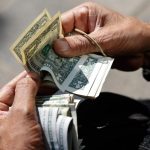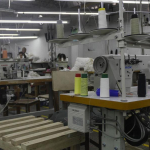More than half of the lagoons in this important natural space in Spain have disappeared.
Recently, the Doñana Participation Council met to analyze the bill that seeks to expand legal irrigation in the Doñana region and that has been presented to the Parliament of Andalusia.
Eloy Revilla, director of the Doñana Biological Station (EBD), dependent on the Higher Council for Scientific Research (CSIC) of Spain, spoke at the aforementioned extraordinary plenary session of the Doñana Participation Council to analyze said bill and its impact on the state of conservation of the Doñana aquifer, on which numerous species and habitats classified as priority by Andalusian, Spanish and European Union legislation depend.
In his speech, Eloy Revilla began by recalling that “Spain is condemned by the Court of Justice of the European Union for failing to comply with its obligations derived from the Water Framework Directive and the Habitat Directive.” According to the sentence, the sentence is condemned for not having taken into account the illegal extraction of water for cultivation and the extractions of water for urban supply in the estimation of the total extractions of groundwater in the Doñana region and for not having foreseen any measure to avoid the alteration caused by the extraction of groundwater on the types of habitats classified as priority.
Effects of the loss of temporary ponds on biodiversity
During his speech, he presented some of the data generated by the scientific activity of the Doñana Biological Station, which is yielding devastating results, both in relation to the state of the lagoons and other habitats in the natural space, as well as the biodiversity that depends on them. .
In the latest study published in the academic journal Science of The Total Environment, the data shows that the deterioration of the Doñana lagoon system is widespread. It has been verified that 59% of the largest lagoons in Doñana have not been flooded since at least 2013. These changes are significantly related to the temperature and precipitation of each year, but also to the extension of cultivated areas, the constructed area in Matalascañas, the distance to the urbanization pumping stations and the operation of the golf course. According to the data, 80% of these lagoons dried up earlier than expected due to observed precipitation and temperature and 84% had a smaller flood area than what had been predicted based on the same parameters, indicating that Human activity is altering the natural balance of the lagoons.
“In Mediterranean systems, droughts are recurrent, but when the succession of years without flooding exceeds this recurrence, the vegetation of the lagoons disappears and they are colonized by terrestrial vegetation, which ends with the complete disappearance of the lagoons and the loss of the habitats cataloged by the Directive”, explained the director of the Doñana Biological Station. This is what has happened with 19% of the gaps sampled in the study, which have now completely disappeared. In addition, another 19% have more than half of their basin invaded by scrub and pines and only 10%, mainly located on the vera, remain in good condition.
On the other hand, the three lagoons that functioned as permanent, that is, those that did not dry up in summer as the vast majority of the Doñana lagoons do, have ceased to be so. For example, the lagoons of El Sopetón and La Dulce, which only occasionally dried up, now dry up frequently. The situation of Santa Olalla, the largest permanent lagoon in Doñana, has been extreme in the summer of 2022, in which it completely dried up. “This lagoon also partially dried up in 1983 and 1995, on both occasions, after four consecutive years of drought. Currently we are also in a dry period, but Santa Olalla is showing minimum values of flooded surface since 2012, despite the fact that both 2010 and 2011 were rainy years”, he indicated.
All this situation is having repercussions on the fauna and the unique vegetation of Doñana. For example, by shortening the flooding period of temporary lagoons, amphibians have lost a large part of their breeding sites. According to the data, the richness of amphibian species has dropped from an average of 4.3 species per square kilometer in 2003 to 2.5 per square kilometer in 2021. The situation of the two native turtle species of the Iberian Peninsula, both included in the European red lists, as well as that of other groups such as dragonflies and devil horses. In 1959, 43 species of the latter were described, while in the last decade only 26 species were observed and only 12 last year. Other groups seriously threatened by the loss of aquatic habitats are fish, of which Doñana preserves endangered species, such as tusks or eels. For example, the total drying up of Santa Olalla in 2022 meant the death of the eels that remained in that last permanent lagoon. And the critical situation of these habitats is not only affecting animal species. It is also having negative repercussions for the conservation of aquatic plants, especially those associated with lagoons with a long hydroperiod, some of which have a very restricted distribution and are threatened.
In addition to temporary lagoons, the conservation of other types of priority habitats directly depends on an aquifer in good condition, such as the black forest. For example, associated with the decline and loss of the Monte Negro within the Natural Area, the defoliation and death of numerous trees is taking place, including multi-centenary cork oaks, which is a good indicator of the exceptionality of the current situation. Since the last review carried out in 2010, 8.3% of the cork oaks have died and 10% are in very poor condition.
Criticism of the bill
Climate change is changing precipitation patterns and these changes are going to intensify in the future and indicate a clear decrease in available water. However, the demand for water in the Doñana region has not stopped increasing. For example, irrigation in the forest crown went from 2,162 ha in 2004 to 3,543 ha in 2014, which represents an increase of more than 30% in just 10 years. The area occupied today is even larger.
In relation to the bill presented in the Parliament of Andalusia, Eloy Revilla wanted to make his opinion clear: “The current exploitation of the aquifer is not sustainable. More resources are being extracted than are regenerated annually through precipitation recharge, which is variable and decreasing, which is why this natural resource is being depleted.”
In addition, he has stated that the uncontrolled proliferation of irrigated crops without the corresponding authorizations has been caused by a “clear governance failure” on the part of the competent administrations. For him, there is a “clear lack of political will” when it comes to solving the problem. “This executive inaction is what has led us to the unsustainable critical point in which Doñana finds itself,” he assured.
According to the director of the Doñana Biological Station, the need to provide water to farms that lack a bill makes it even more difficult to urgently solve the problem. “The current situation of Doñana is critical and does not allow us to wait another decade for decisions to adjust the demand for water to availability,” he stated in plenary session. “If this were done, we would be imposing, contrary to current legislation, the complete loss of temporary lagoon systems and other habitats dependent on the aquifer. Additionally, if we do not act urgently, the depletion of the resource will cause legal exploitations to have problems irrigating, as is already happening in this 2022-2023 campaign, putting all the economic activity that depends on the aquifer at risk.”
The problem that Doñana is facing is very complex and its solution will also have to be. “The creation of false expectations, which we know a priori cannot be met, only adds complexity to the problem. A childish dialectic is used, of good and bad, which only seeks to confront different parts of society, using absurd messages ”, he criticized. “It is important to remember that, to be economically, socially and environmentally sustainable, human activities, including economic ones, need a predictable and well-preserved environment.”
Example of missing temporary lagoon. Currently, the Laguna del Moral is invaded by white forest, typical scrubland of dry areas. (Photos: EBD / CSIC)
Proposals to stop the deterioration of Doñana
To end his speech, the director of the Doñana Biological Station offered some guidelines to prevent further degradation of the natural area, listed as a World Heritage Site.
Among his proposals is that of urgently reducing the total amount of water that is extracted from the aquifer to levels that allow the start of its recovery. Only in this way can its exploitation be sustainable, both in the short, medium and long term. There is also the task of updating the system for evaluating the state of the aquifer and carrying out annual evaluations of the availability of water from the aquifer to define the maximum amounts that can be extracted from it.
Likewise, it also believes it is necessary to urgently restore governance in the exploitation and management of water and soil in Doñana and its region so that they are within the current legislation and protect legal farmers against the loss of brand value of their products, unfair competition from illegal producers and uncertainty for the future.
On the other hand, Eloy Revilla is committed to urgently establishing the Doñana 2030 Work Commission, as already approved by the Participation Council, to advance quickly and in a coordinated manner in solving all the problems that Doñana faces, not only those related to the aquifer, but also to water pollution or intense overgrazing.
On the other hand, it proposes intensifying the monitoring of natural systems and species affected by climate change and the overexploitation of resources, as well as carrying out socioeconomic analyzes in order to develop sustainable agriculture in the region, as well as establishing measures to diversify the activity economic.
“The future of Doñana and its region depends on our decisions, which, I remind you, is not only a local or regional value, but is also a universal heritage of all humanity. You have to choose how you want to go down in history, ”concluded Eloy Revilla in his speech. (Source: CSIC)










![[Img #68322]](https://thelatestnews.world/wp-content/uploads/2023/04/Donana-in-critical-condition.jpg)


![[Img #74129]](https://thelatestnews.world/wp-content/uploads/2024/10/Can-plants-hear-300x200.jpg)